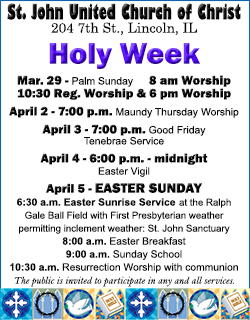|
 Beaver discussed the historic migration of nearly 8 million to
the shores of America, many of whom got caught up in the chaos of
our American Civil War. He noted that the Irish soldiers demanded
there always be a Catholic Chaplain in their regiment and that five
Catholic chaplains from the University of Notre Dame were in these
Irish Regiments. Gen. William T. Shermanís widow in the 1890ís
visited the University of Notre Dame to present a large bronze
plaque, inscribed with words of gratitude for the efforts of these
priests. Beaver discussed the historic migration of nearly 8 million to
the shores of America, many of whom got caught up in the chaos of
our American Civil War. He noted that the Irish soldiers demanded
there always be a Catholic Chaplain in their regiment and that five
Catholic chaplains from the University of Notre Dame were in these
Irish Regiments. Gen. William T. Shermanís widow in the 1890ís
visited the University of Notre Dame to present a large bronze
plaque, inscribed with words of gratitude for the efforts of these
priests.
Beaver explained the various reasons the Irish immigrated to
America, the reception they received, and the impact they had on the
areas they settled. He pointed out that many Irish men were able to
get factory or farm jobs to help the northern war effort.
The terrible downtrodden times of Irish segregation in this country
was explained with many photos to illustrate it in a full-length
power-point presentation. Beaver highlighted the greatness of this
Irish influx. He pointed out the contributions and successes of
several of our national and local personalities, many as the result
of the struggles of their ancestors. Among them were boxer John L.
Sullivan, President John F. Kennedy, Julia Roberts, George Clooney,
Nicole Kidman, Liam Neeson, and Drew Barrymore.
 Paul included information and photos of American livestock from the
mid-1800's through mid-1900's, which were much superior to the Irish
livestock ó primarily due to much less crop abundance to feed them.
Irish immigrant William Scully scuttled his failed attempt to raise
sheep as his family had done in Ireland. He then concentrated on
dredging the Central Illinois prairie in order to raise crops and
livestock ó realizing early on that the fertile loam soil of the
mid-west was much superior to that of his homeland.
Photos and name captions of the Elkhart Dwyer, Hickey, Gleason,
Hegerty, Smith, Dee, Murphy, Walsh, and Tierney families were
featured. With the ditty, Danny Boy, playing in the background, a
choice of tasty corn beef and cabbage or meat loaf and mashed
potatoes were served.
The next dinner talk will be on April 18th at the Wildhare Cafe.
Lincoln College's Dr. Dennis Campbell will present "The Life and
Times of Logan County Mammals". The talk will focus on three of the
county's time periods: prehistoric, mid-1800's, and the present.
For more information and registration, go to
http://www.elkharthistoricalsociety.org/


[to top of second column] |

Additional information:
Notre Dame and General Sherman
Although Sherman was an agnostic, his wife Ellie was a pious
Catholic. Her favorite cousin was Mother Angela, a Holy Cross nun
who ran a hospital for Sherman's wounded soldiers in Memphis,
Tennessee. (Angela Boulevard in South Bend is named after her.)
Ellie was also acquainted with Notre Dame's founder, Rev. Edward
Sorin, C.S.C. In 1862 she enrolled her son Willy as a minim at Notre
Dame and sent her daughter Minnie to St. Mary's College. Sadly,
Willy died in October, 1863, while visiting his father in Memphis.
Notre Dame's Father Joseph Carrier, C.S.C., was at Willy's bedside
when he died, and his presence was much appreciated by the Shermans. In September 1864, Ellie moved her entire family to South
Bend and enrolled her son Tommy in the Notre Dame minim program.
On June 7, 1865, General Sherman spoke at the commencement
exercises. Moved to tears by stories about his beloved Willy,
Sherman promised that the boys of Notre Dame would always be
dear to him. Sherman's granddaughter, Eleanor Sherman Fitch,
donated family papers, photographs, and memorabilia to the
Archives of the University of Notre Dame prior to her death in
1959. The photographs on display in this exhibit have been
selected from the Sherman Collection and were publicly exhibited
at the Snite Museum for the first time.
Source:
http://archives.nd.edu/research/
exhibits/barnard/sbio.html
 Sherman was a practicing Roman Catholic up until the Civil War.
After the war Sherman, possibly due to trauma the war caused,
claimed to have stopped partaking in organized religious life
for the latter part of his adult life, although his wife, Ellen
Ewing Sherman, was a devout Catholic and their son Thomas became
a Catholic priest. According to his son, Sherman attended the
Catholic Church until the outbreak of the Civil War but not
thereafter.[131] In 1888, Sherman wrote publicly that "my
immediate family are strongly Catholic. I am not and cannot
be."[132] A memoirist reports that Sherman told him in 1887 that
"my family is strongly Roman Catholic, but I am not."[133]
Sherman was buried at Calvary Catholic Cemetery in St. Louis,
Missouri.
Source:
http://en.wikipedia.org/wiki/William
_Tecumseh_Sherman
[Phil Bertoni] |